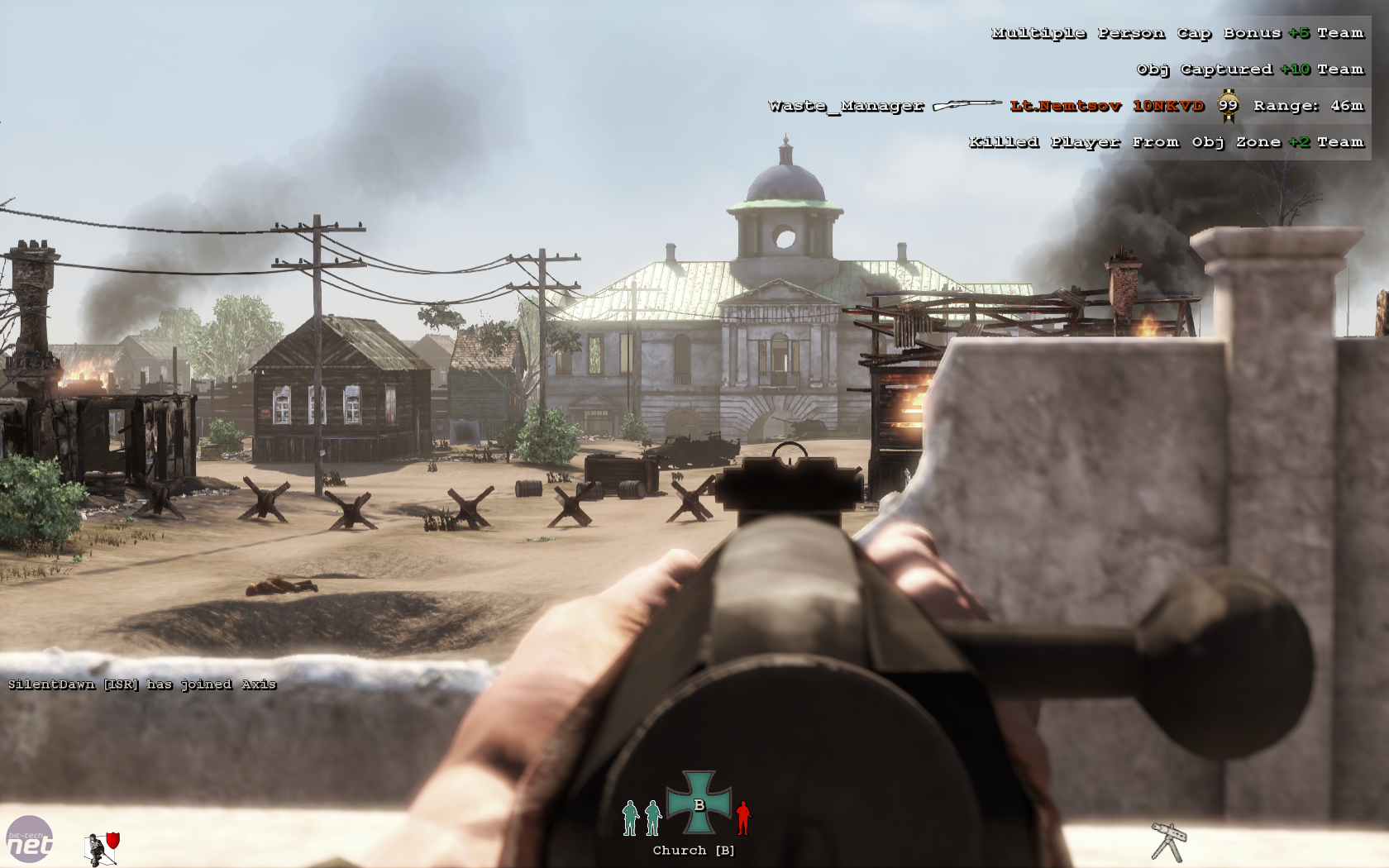Running through TripWire Interactive’s shooter guns blazing isn’t the smartest course of action. Instead moving strategically through the environment with your gun loaded with ammunition is the surest way to not only stay alive, but win.
If you aren’t aware of it beforehand, than within a matter of seconds Red Orchestra 2: Heroes of Stalingrad will bury the fact that it is a brutal first-person shooter bordering on simulation straight into your skull. Unlike other FPS’s, the combat has a realistic look and feel to it; running and gunning isn’t going to cut it (if you do than a single well placed bullet can have you falling to the ground dead or bleeding to your slow and painful release), instead, you want to take measured movements, planned shots, and good cover.
While the slower pace of the gameplay is great, it may leave other players more used to a traditional FPS frustrated. For instance, running out into the middle of a battlefield to dump your bullets into the enemy, would kill you in Orchestra; as opposed to Call of Duty, which would make you feel almighty and unstoppable.
Furthermore, concessions made to make it easier on the player that you would find in another FPS aren’t here; specifically HUD elements. Unlike Call of Duty or Battlefield, there are no graphical denotations for ammunition, instead if you want to know how many rounds you have left in a clip then you have to manually check.
All of the more realistic gameplay mechanics in Orchestra had me overwhelmed; it all seemed very random, with lots of sudden, unexplained deaths. However, after I spent half an hour with it I became accustomed to the slower pacing and strategic elements of the game.
At its core Red Orchestra is largely multiplayer focused. The game features three different game types; Countdown, Firefight, Territory. Firefight is the standard flavor of team deathmatch; Territory is more or less domination (two teams attacking and defending specific objectives); Countdown pits one team as the attackers and the other as the defenders for their objectives (similar to Battlefields Rush mode); what makes these game modes interesting and unique, however, is the addition of a commander class (available to only one player every match or round).
In every game mode, the commander is tasked with leading his troops and coordinating their attacks. Unlike other classes the commander has the ability to provide cover for his troops via smoke grenades, designate targets with binoculars, and call in artillery strikes. In both countdown and territory modes, the commander can “Force Respawn” his troops, which can lead to a more successful outcome in a battle.
While multiplayer is largely similar to that of a typical first person shooter, matches tend to be slower pace. The more realistic gameplay mechanics have players strategizing with each other, taking measured movements and careful shots. More often than not I would look over the battlefield and see nothing but an empty wasteland with gunshots echoing off in the distance. On occasion a lone man would run across the battlefield and be shot down from a hidden enemy. This persisted across the more populated servers; however, instead of a desolate wasteland, both sides would stay in cover, hidden from the each others view, and took pot shots from afar.
Staying true to the gritty WWII setting, the multiplayer maps have an authentic look and feel to them. The eleven maps are laid out exceptionally well; rubble and blown out buildings provide great cover, while also creating areas that act as arenas for glorious close quarter battles.
Red-Orchestra-2-Heroes-of-Stalingrad
Even though Red Orchestra 2 has the authentic look and feel of WWII, technical quirks keep it from becoming entirely realistic. The cover system found in the game would become a hassle in more chaotic battles as it was too easy to become attached to the wrong side of it, and expose yourself to the enemies bullets. Bullet drop in the game was also a hassle to deal with, as it never seemed to model the physics of the bullet properly; often I would end up over or under shooting a target that I felt I should’ve hit. There is a tutorial mission explaining how to shoot a target at long distances, but it only seemed to exemplify the problem even more. The more troublesome issue that I found was the occasional crashes that interrupted my gameplay at some of the most inopportune moments — mainly when I was in a multiplayer match.
The troops of Stalingrad also show their weakness to bad programming in the newly implemented single-player mode. Intended to teach newcomers the gameplay mechanics, single-player ends up being a disappointment due to its flood of AI problems. Friendly bots will mindlessly run around, ignoring orders, and failing to traverse the environment. The enemy AI is just as annoying and stupid, but doubly so as they tend to act as if you are invisible and completely ignore your bullets pounding into their chests.
Red Orchestra 2: Heroes of Stalingrad is a demanding game, and what you get out of it is completely dependent of how long you play it. The authentic look and feel of the game certainly adds flavor to its gameplay, but this is game that is focused on the realistic infantry combat of WWII, and where victory is entirely dependent on your willingness and patience for its slower pacing.



this was cool
ReplyDeletethis article is nice
ReplyDelete